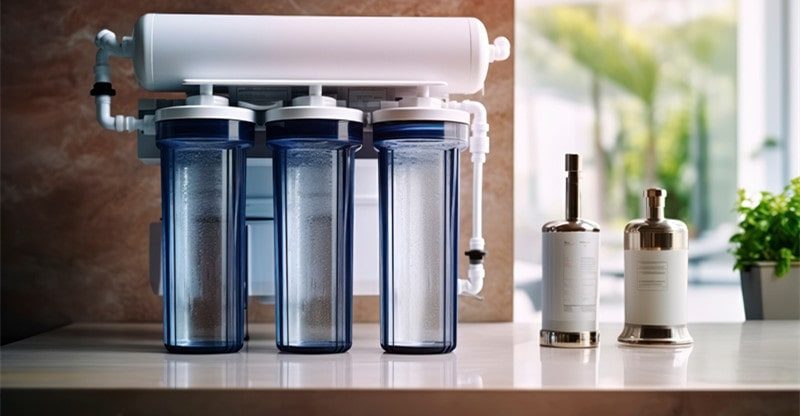Innovative Technologies: Advancements In Commercial Water Purification Systems
In commercial water purification, recent advancements have paved the way for more efficient, sustainable, and cost-effective solutions. These innovations ensure the availability of clean water and address the growing environmental and economic concerns associated with water purification. Among these advancements, the optimization of membrane technologies stands out as a key development in enhancing system performance and longevity.
This article explores some key advancements in commercial water purification systems.
1. Enhancing Efficiency Through Advanced Membrane Technologies
One of the cornerstones of modern water purification is using membrane technologies, with reverse osmosis (RO) being particularly prevalent. RO systems are highly effective in removing contaminants, but their efficiency can be compromised over time due to membrane fouling.
This is where innovative cleaning techniques, such as reverse osmosis membrane cleaning, come into play. This process involves specialized solutions to clean the membranes, thus restoring their performance without causing damage. Such advancements can help prolong the life of the purification systems and ensure consistent water quality.
2. Implementing Smart Systems For Real-Time Monitoring
The advent of smart systems in commercial water purification marks a pivotal shift towards more efficient and reliable water treatment solutions. By integrating sensors and internet-connected devices, these systems offer a continuous stream of data regarding the quality of the water being processed, the operational status of the system, and any emerging issues that may affect performance. This constant flow of information enables operators to make immediate system adjustments, ensuring it operates at peak efficiency.
The inclusion of predictive analytics further enhances these systems by forecasting potential maintenance needs, which allows for proactive interventions that prevent costly downtime and extend the lifespan of the equipment. This optimizes the purification process and significantly reduces operational costs, making it vital in modernizing water treatment facilities.
3. Sustainability Through Energy Recovery And Waste Reduction
Developing and integrating energy recovery devices and zero-liquid discharge (ZLD) systems have emerged as key innovations in the quest for more sustainable water purification methods.
Energy recovery devices are designed to capture the energy typically lost during the purification process and reuse it, drastically reducing the system’s overall energy demand. This can help lower operational costs and diminish the carbon footprint of the purification process.
On the other hand, ZLD systems represent a holistic approach to waste management that aims to eliminate liquid waste. Through advanced treatment and recycling technologies, these systems recover usable water from wastewater streams, ensuring that every drop is put to good use. Implementing ZLD systems conserves water and prevents pollutants from releasing into the environment, making it a cornerstone of sustainable water management practices.
4. Advanced Oxidation Processes For Enhanced Contaminant Removal
Advanced Oxidation Processes (AOPs) represent a significant leap in water purification technologies, especially in their ability to address and neutralize resilient contaminants evading conventional treatment methods. The essence of AOPs lies in their utilization of highly reactive species, predominantly hydroxyl radicals, renowned for their exceptional oxidative prowess. These radicals engage with and disintegrate complex organic molecules, pathogens, and pollutants, rendering them harmless.
The strategic incorporation of AOPs within commercial water purification frameworks amplifies the purity and safety levels of the treated water, making it compliant with the rigorous quality standards demanded by various industries. This adaptability to industrial needs underscores the pivotal role of AOPs in modern water treatment methodologies, ensuring access to clean and safe water for diverse applications.
5. The Role Of Nanotechnology In Water Purification
Nanotechnology stands at the forefront of innovative solutions in the water purification sector, introducing a paradigm shift with its groundbreaking approach to contaminant removal.
Utilizing nano-scale materials and structures is at the heart of this revolution, offering unprecedented efficiency in targeting and neutralizing a broad spectrum of pollutants. Nanofiltration membranes, characterized by their nano-sized pores, excel in precision by selectively sieving out specific contaminants, which ensures high water purity.
Similarly, catalytic nanoparticles are instrumental in bolstering the degradation of pollutants, enhancing the overall efficiency of purification processes. Infusing nanotechnology in water treatment elevates the effectiveness of purification systems and paves the way for developing more compact, portable, and versatile purification units. This adaptability and efficiency make nanotechnology an indispensable asset in the ongoing efforts to achieve superior water quality and accessibility.
Conclusion
The landscape of commercial water purification is undergoing a transformative shift driven by technological advancements that prioritize efficiency, sustainability, and adaptability. From optimizing membrane technologies to incorporating smart systems, energy recovery, and advanced oxidation processes, these innovations are setting new standards in water purification.
As the industry continues to evolve, it’s expected that these technologies will address the current challenges and pave the way for future breakthroughs in water purification.



